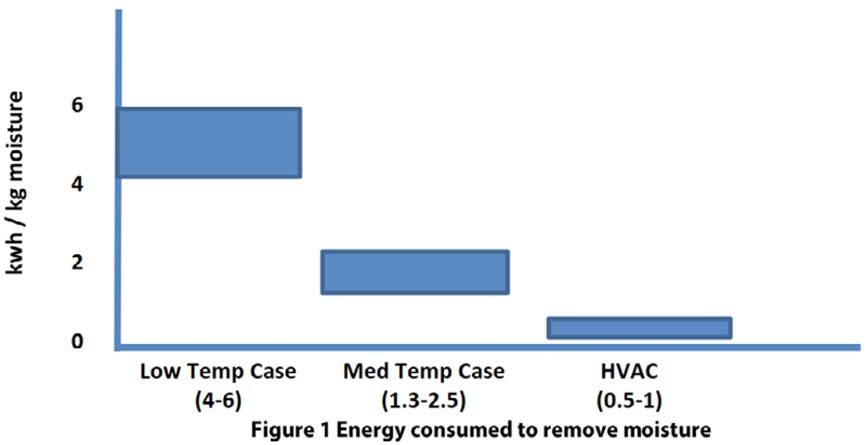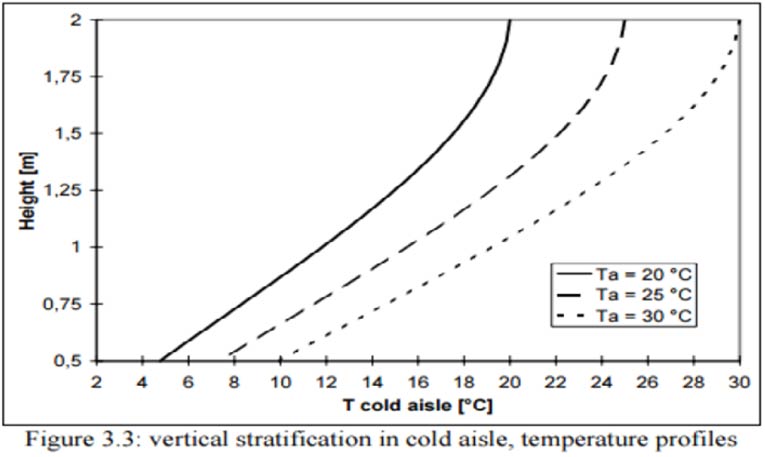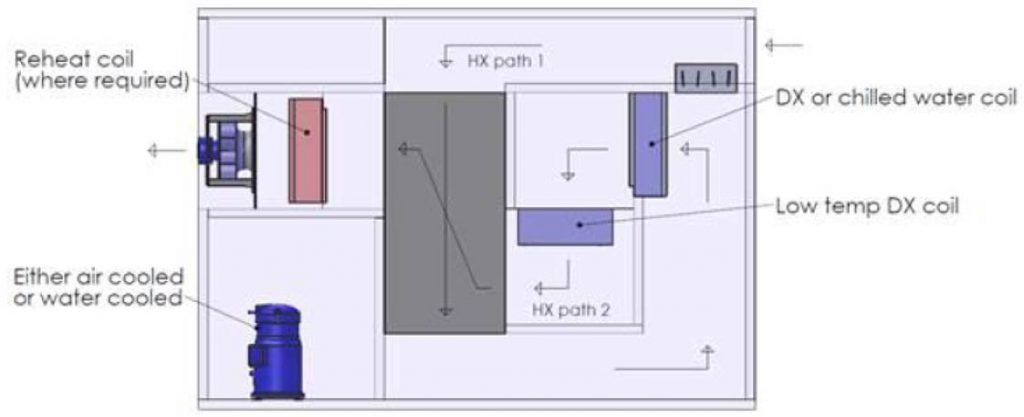Videos – Economy Cycle Mode & Return Air Bypass Mode
Confused by Economy Cycle Mode or Return Air Bypass Mode for ERV / HRV units? Then watch these vi...
May 2021
Home
Air conditioning is important in building design and planning, because besides regulating the interior climate, it contributes to the energy efficiency and operating costs of the building. Supermarkets offer particular air conditioning challenges as they feature a varied mix of applications under one roof, each with specific requirements to heat and cool the surrounding space and provide the required amount of ventilation. Because supermarkets are energy intensive commercial buildings, with energy usage intensities ranging from 460 to 750 kW/h per square metre, much of it used in the refrigeration zone, this paper will examine air conditioning in supermarkets, more particularly the interaction of air conditioning and refrigerated storage cases and the energy efficiency savings that are available if the air conditioning system is correctly designed.
The Effect of Humidity on Refrigerated Storage Cases
Refrigerated display cases exchange heat and moisture with their surrounding environment. The moisture exchange is most critical because it raises the energy consumption to maintain a satisfactory temperature and detracts from the presentation of refrigerated products, and may impact the proper protection of the product.
Supermarkets operate their refrigeration systems continuously to maintain proper food storage conditions within their refrigerated display cases and food storage areas, typically accounting for approximately 50% of their total electrical energy consumption. The HVAC system consumes a further 10% of the total energy used by a typical supermarket in order to maintain suitable climatic conditions for the occupants and refrigerated display cases. There is a significant interaction between a supermarket’s refrigeration system, its HVAC system and the ambient conditions within the store. Heat and moisture contained in the store air contribute both a latent and sensible heat load to the supermarket refrigeration system. The moisture which infiltrates the refrigerated cases leads to condensation on the interior surfaces and causes frost to form on the evaporator coils. To minimize condensation, anti-sweat heaters are used to heat case interior surfaces. Moisture removed by the refrigeration system is an inefficient and energy intensive process.

Figure 1 shows the different power consumptions per kilogram of moisture removed by the low and medium temperature display cases compared to moisture removed by the HVAC system. Low temperature cases consume approximately 4 to 6 kWh of electrical power to remove one kilogram of moisture from the air due to the lower evaporating pressure at which they operate. Reducing the ambient relative humidity within the supermarket shifts more of the dehumidification load from the refrigeration cases to the more efficient HVAC system, reducing the refrigeration power consumption. It is estimated that there is a 2% reduction in refrigeration energy consumed for every 1°C reduction in the air dew point temperature, not including the power saved by reducing the number and length of the defrost cycles and the power consumed by the anti-sweat heaters.
In addition to the energy savings, there are marketing benefits from the reduced humidity including improved product appearance; a more comfortable occupant environment; a reduction in mould, mildew and fungal growth and the management of condensation on aisle floors which reduces the risk of accidents.
The performance of refrigerated display systems as a function of relative humidity has been investigated by many different researchers.
One study performed at Southern California Edison’s Refrigeration Technology and Test Center investigated the effects of humidity on a medium temperature open five shelf dairy case, a medium temperature open two shelf meat case, a low temperature coffin case and a low temperature reach in five shelf cabinet.
The tests were carried out at an ambient temperature of 23.9°C with the relative humidity ranging from 35% to 55% in 5% increments. The results indicated that by reducing the RH from 55% to 35%:
– Dairy case: The evaporator load was reduced by 21%
– Meat case: The evaporator load was reduced by 21.6%
– Coffin case: The evaporator load was reduced by 12.6%
– Reach in case: There was little impact on refrigeration energy consumption but anti-sweat heater power consumption reduced considerably.
Other testing has shown a 70%+ reduction in condensate from open and medium temperature dairy cases when the relative humidity was reduced from 55 to 35%.
It has been found that anti-sweat heater energy consumption decreased by 1 to 2% for each 1% reduction in relative humidity and that defrost electrical energy savings could be achieved if the store relative humidity was maintained at 35% rather than 55%.
The overall energy savings achievable by controlling humidity in a supermarket are best summarised by Howell et al in a paper published by the University of Southern Florida.

This was based on a typical US store in Tampa Florida with an area of 3700 m2, a conditioned space of 2800 m2, an air supply rate of 14,000 m3/s, a ventilation rate of 1.8 m3/s and an indoor temperature of 24°C. The display case refrigeration system comprised:

These results are not dissimilar to those of a French study by Ecole des Mines de Paris/ Centre d’Energétique, Paris, in respect of a supermarket in the south of France. This study concluded that the supermarket would see a reduction of 181,000 kWh in annual refrigeration power consumed compared with the US study saving of 208,000 kWh when RH was lowered from 55% to 35%, reflecting the different ambient conditions and refrigeration loads over the one year study period in the two chosen locations. The French study concluded that the optimum RH for the model store was 45% because the HVAC energy consumed to achieve the lower humidity exceeded the refrigeration energy savings. The assumptions behind this statement are unclear.
The French study also modelled the likely power savings by raising the store ambient temperature between 22-24°C. There were energy savings as can be seen in table 4 below but they were insignificant in the overall energy consumption of the supermarket.

All studies have arrived at the same conclusion, lower store humidity results in significantly lower electricity use for refrigeration, defrost cycles and anti-sweat heaters. Although, all of the studies reviewed have used relative humidity as the base line, it is in fact absolute humidity that is critical to the refrigeration power consumption because it is the amount of moisture available to be condensed by the refrigerated cases, and not the relative humidity, that determines the power consumed.
The Air Conditioning System
Conventional air cooling systems, whether DX or chilled water, are not an efficient option to manage high latent loads as they must first overcool the air and then reheat it to maintain store comfort. Overcooling and then reheating the air to maintain the stores’ humidity levels negate the energy savings gained in the refrigeration system particularly at times of low activity when there is only a small sensible load in the store.
Ventilation air whether introduced to satisfy minimum code requirements, as make up air or to provide a positive store air pressure to limit infiltration, will, in most cases, be the major source of moisture addition. Therefore, no matter what the air conditioning system design, be it DX or chilled water, a central plant or individual zoned area units, it is best practice to treat the outdoor air to remove humidity before it is introduced into the store to lower the total store energy consumption.
Maintaining a lower humidity level at around 40% RH allows the store temperature to be increased as occupants feel comfortable even at 23°C because at low humidity, natural perspiration is a highly effective cooling mechanism. This lowers energy consumption as indicated in Table 4. Particular attention should be paid to the air temperatures around the refrigerated display cases.

Figure 2
Stores aisles in the refrigerated goods section are often too cool due to air spilled from the refrigeration cases. Not only are these aisles colder, they exhibit a vertical temperature gradient that makes it even less comfortable for the occupants as demonstrated by Figure 2 taken from the Ecole des Mines de Paris/ Centre d’Energétique study paper. Warm dry air, often around 30°C, can be distributed directly to the cold aisle zone with either under case or overhead supply ducts to minimize this cold aisle effect.
Dehumidification Technologies
Maintaining store relative humidity to a 40-45% range has significant energy saving benefits if done efficiently.
Until recently, the best and most efficient way to deliver air at such low dew point was with desiccant dehumidification of the fresh supply air.
Whilst effective in controlling humidity levels, the desiccant requires regeneration with hot air, the temperature being dependent on the amount of moisture removed from the desiccant to the regeneration airstream. A secondary heating source is often required to raise the regeneration air temperature imposing an energy penalty even where a source of low grade waste heat is available.
Removal of part of the moisture by pre-cooling the air with refrigeration before passing it through the desiccant wheel will lower the required regeneration temperature at the expense of the additional refrigeration energy consumption.
There are many desiccant system designs where the energy consumption and regeneration air temperature are dependent on the number of desiccant wheels, whether they are configured in series or are parallel and whether they use refrigeration to precool the air.
In many cases, particularly if the store is located within a mixed or multi use development, the regeneration airstream needs to be ducted to and from the dehumidifier which may be prohibitive for the purposes of building design or capital cost, whether in a new or refurbished application.
The alternative to desiccant dehumidification to achieve this low store RH is to cool the air to a dew point temperature below 5°C to cause moisture to condense from the air. Historically, this has not been a viable option as ice forms on the evaporator cooling coil requiring a defrost cycle which interrupts the dehumidification process and adds to the energy consumed.
A Different Approach
Air Change Australia recognised the limitations of desiccant dehumidification in many applications and developed a low dew point dehumidifier [patent pending] that delivers air below 5°C dew point and consumes similar or less electrical power than a typical desiccant system by using heat exchange to achieve part of the cooling load.
It can be used as either a standalone unit discharging waste condenser heat to the outside air via air cooled condensers or configured with the building chilled water system to expel waste condenser heat through the chilled water circuit when external condensers are either not practical or prohibited.

Figure 3
The Air Change Dehumidifier can precisely deliver air at the specified temperature and humidity down to as low as a 3°C dew point temperature.
From Figure 3 above, an air to air heat exchanger is used to pre-cool incoming air (HX path 1) whilst simultaneously re-heating supply air (HX path 2).
Consider the energy consumption to deliver a low dew point air condition in two different applications,
1. As an addition to an existing HVAC system and
2. As a dedicated outdoor air system supplying outside air directly to the space.
In the first case, the existing HVAC system has typically lowered the air temperature to 13°C meaning that it needs to only be reduced by a further 9°C to reach the 4°C dew point.
Part of this cooling load is achieved by passing the warmer supply air (HX path 1) against the cold 4°C air (HX path 2) to precool it before reaching the refrigeration evaporator coil as shown in Table 5.

Approximately 40% of the required cooling occurs in the heat exchanger leaving a load of only 12.3kj/kg to be performed by the dehumidifier refrigeration system.
Consider if this dehumidifier was applied to the Tampa Florida store operating 24 hours per day as modelled by Howell et al. If the dehumidifier unit was connect to the chilled water system (water cooled condenser and first cooling coil) it would have a COP approaching 5.2 and consume 45,00kwh of additional electrical power per annum (to deliver the 1.8m3/s fresh air supply at a dew point of 4°C to ensure a 35% RH in the store).
This compares to the identified refrigeration saving of 421,000 kWh. Obviously this additional HVAC power consumption would be reduced if the store did not operate for 24 hours, but the refrigeration savings would be the same. In the second case of a dedicated outdoor air system (DOAS) where hot humid air is introduced directly into the dehumidifier, the heat exchanger performs 40% of the necessary cooling. HX path 1 lowers the air temperature from 32°C to 19.7°C before reaching the dehumidifier refrigeration evaporator as shown in Table 6. The supply air, HX path 2, is re-heated from 4°C to 30°C before being distributed into the cold refrigeration aisles to raise the ambient temperature and hence comfort level.

Using the Air Change approach, the refrigeration required to deliver 4°C dew point air and hence a 35% store RH is 39.5 kj/kg.
This compares with a conventional HVAC system load of 45.9 kj/kg to lower the temperature of the fresh air from 32/26.5 °C to 13/13 °C. At this condition, 35% RH would not be achieved and there would be no resulting benefit to the refrigeration system.
In this case there is a saving, not a power penalty, to deliver a low store RH to ensure energy savings by the refrigeration system provided that 30 °C air can be distributed to the cold aisles to improve occupant comfort.
Conclusion
As can be seen from the examples above, the return on capital invested to ensure a low store RH has a relatively short payback period with the overall benefits from energy savings and produce presentation outweighing the initial capital investment cost.
Utilising the Air Change approach does not require the complexity and high maintenance costs associated with desiccant systems, yet can still deliver outcomes that will reduce electricity consumption and improve occupant comfort.
References
1. Isolated Sub Dehumidification Strategies in Large Supermarkets and Grocery Stores
Submitted to: Refrigeration Project Team Retail Energy Alliance
Prepared by Fricke & Sharma of Oak Ridge National Laboratory, Oak Ridge, TN
2. Effects of Indoor Relative Humidity on Refrigerated Display Case Performance by Howell, Rosario & Bula of the Department of Mechanical Engineering, University of South Florida, Tampa , Florida, USA
3. Significant Parameters for Energy Consumption in Frozen Food Area of Large Supermarkets, by Orphelin, Marchio & Bech, Ecole des Mines de Paris/Centre d’Energetiqe, Paris, France
We will happily meet with you to discuss your project and our products at a time that suits you.
© Copyright 2020 Air Change Australia. Air Change products internationally patented protected. Refrigerant Trading Authorisation No. AU23586 | Privacy Policy | Terms and Conditions of Sale | Warranty Policy | Site by AAM